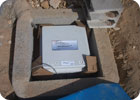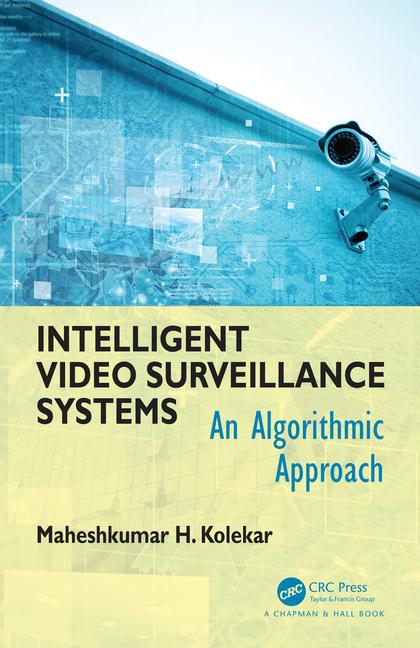Systems Design and the Perimeter
The perimeter grows bigger and gets tougher.
As increasing numbers of surveillance cameras continue to be deployed in most major metropolitan areas, they aren’t only being used to deter crime but can also play an important role in real-time situation management. In addition, first responders stand to benefit from upgraded information technology and telecommunications networks that are being designed and deployed to support data and video – in addition to existing voice traffic – over wireless networks.
However, does the increased number of cameras make public safety agencies more effective? And with all the new technology, is the right information quickly getting into the hands of the people who need it most?
Imagine what it would be like if a first responder (police, fire, private officers or EMS) could actually see what they were responding to before they arrived on scene? Think of the vital questions that could be answered ahead of time: Are there two cars or three? Is the building fully engulfed in flames? Does the perpetrator have a gun? Will further assistance be needed? Do I need to call in other agencies? Should I notify the hospital trauma center so they can be ready? Timing and information is critical to First Responder personnel, and real-time video surveillance is the next best thing to being on site.
The challenge is to integrate new systems into your existing environment, as well as joining together your physical security systems with your IT network without requiring wide-scale replacement of legacy systems. The trick is to ensure better security standards by bringing in new technologies while preserving the significant investment you’ve already made. Operations centers are now fusing these innovative technologies with their existing security and surveillance network through physical security information management (PSIM) platforms that can effectively integrate and manage the disparate data types and sources across both the physical and IT security infrastructures.
Wireless data networks have evolved to be more reliable and support more capacity. The latest class of public safety wireless products has been architected to handle mobile data and video, with support for robust control and media signaling built to withstand the data corruption and delay typical of wireless networks. In addition, efficient control and media signaling of these wireless advancements are critical to making best use of limited RF resources. Finally, quick recovery without user intervention from out of coverage conditions has been baked into these new products, providing increased responsiveness. However, to take full advantage of improved wireless capabilities, operations centers will need to deploy wireless networks that are ad-hoc, self-forming, self-healing and balancing – commonly known as a mesh network.
PSIM platforms are built to easily combine wireless mesh networking technologies with existing surveillance technology and systems to allow surveillance video to be shared with a police car, fire truck or mobile command vehicle while en route to an incident. With mesh wireless technology being deployed in public safety environments these networks are designed to support mobility and rich media applications including video – giving the first responder video-based intelligence, an unprecedented degree of real-time insight into any given situation. Additionally, video can be sent from the First Responder mobile cameras back to the operations center, providing critical information to centralized personnel responsible for making split second decisions.
Today’s operations centers collect vast amounts of information from a range of data sources and networks. Lacking the means to distill the most important intelligence from this data overload often results in a delayed response, highlighting the need for a PSIM platform that integrates all data into a single seamless management interface. When combined with the flexibility and reach of wireless mesh and video capabilities on mobile devices, first responders and decision-makers now have an unprecedented ability to respond safely and appropriately to a situation or security event.

As increasing numbers of surveillance cameras continue to be deployed in most major metropolitan areas, they aren’t only being used to deter crime but can also play an important role in real-time situation management. In addition, first responders stand to benefit from upgraded information technology and telecommunications networks that are being designed and deployed to support data and video – in addition to existing voice traffic – over wireless networks.
However, does the increased number of cameras make public safety agencies more effective? And with all the new technology, is the right information quickly getting into the hands of the people who need it most?
Imagine what it would be like if a first responder (police, fire, private officers or EMS) could actually see what they were responding to before they arrived on scene? Think of the vital questions that could be answered ahead of time: Are there two cars or three? Is the building fully engulfed in flames? Does the perpetrator have a gun? Will further assistance be needed? Do I need to call in other agencies? Should I notify the hospital trauma center so they can be ready? Timing and information is critical to First Responder personnel, and real-time video surveillance is the next best thing to being on site.
VIDEO AND DATA
Every major city in the U.S. has either deployed security camera systems or is in the planning stages. The systems are designed to bring video feeds from all over the city back to a centralized video security operations center. This video is often a mixture of analog and digital signals, requiring equipment from multiple vendors. Major technology advances including real-time monitoring systems – from IP-based digital video cameras and recorders to radio frequency identification and geographic information system – have emerged to improve transportation, security and surveillance management.The challenge is to integrate new systems into your existing environment, as well as joining together your physical security systems with your IT network without requiring wide-scale replacement of legacy systems. The trick is to ensure better security standards by bringing in new technologies while preserving the significant investment you’ve already made. Operations centers are now fusing these innovative technologies with their existing security and surveillance network through physical security information management (PSIM) platforms that can effectively integrate and manage the disparate data types and sources across both the physical and IT security infrastructures.
Wireless data networks have evolved to be more reliable and support more capacity. The latest class of public safety wireless products has been architected to handle mobile data and video, with support for robust control and media signaling built to withstand the data corruption and delay typical of wireless networks. In addition, efficient control and media signaling of these wireless advancements are critical to making best use of limited RF resources. Finally, quick recovery without user intervention from out of coverage conditions has been baked into these new products, providing increased responsiveness. However, to take full advantage of improved wireless capabilities, operations centers will need to deploy wireless networks that are ad-hoc, self-forming, self-healing and balancing – commonly known as a mesh network.
PSIM platforms are built to easily combine wireless mesh networking technologies with existing surveillance technology and systems to allow surveillance video to be shared with a police car, fire truck or mobile command vehicle while en route to an incident. With mesh wireless technology being deployed in public safety environments these networks are designed to support mobility and rich media applications including video – giving the first responder video-based intelligence, an unprecedented degree of real-time insight into any given situation. Additionally, video can be sent from the First Responder mobile cameras back to the operations center, providing critical information to centralized personnel responsible for making split second decisions.
Today’s operations centers collect vast amounts of information from a range of data sources and networks. Lacking the means to distill the most important intelligence from this data overload often results in a delayed response, highlighting the need for a PSIM platform that integrates all data into a single seamless management interface. When combined with the flexibility and reach of wireless mesh and video capabilities on mobile devices, first responders and decision-makers now have an unprecedented ability to respond safely and appropriately to a situation or security event.
About the Source
Security Magazine thanks Rick Clarkson of VidSys for the information in this article. Contact him at rick.clarkson@vidsys.com.
SIDEBAR: Sounding the Perimeter Alert
Protecting valuable assets means keeping security threats far from them. Securing perimeters through a more accurate and discreet application technology is the goal. A unique tech approach is UltraSensor from UltraVision. The approach protects even the most critical environments by sounding a perimeter alert before an intruder has an opportunity to enter into a sensitive area. It delivers the necessary data to make fast and appropriate decisions on intrusion threats. Seeing through barriers like walls, roadbeds, sidewalks and ceilings, the gear pinpoints motion velocity and distance, and the mass of the intruder. Impervious to weather, ambient lighting and other disruptors like falling landscape debris, the system allows for fewer false alarms, all the time remaining invisible to the naked eye, creating a tamper-resistant solution.Looking for a reprint of this article?
From high-res PDFs to custom plaques, order your copy today!







